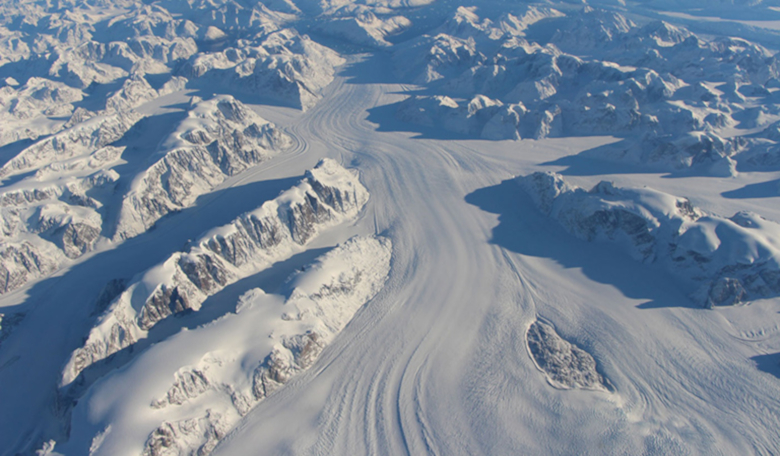The idea that Mars once had a warm and wet climate is the predominant reason scientists suggest that in its early history, the planet could have had suitable conditions for life to get established
Now that theory could be in trouble as a new study proposes that the martian surface was once populated by huge glaciers that carved out the martian terrain and not rivers as previously thought, putting doubt on how habitable early Mars really was.
Finding signs of past life on Mars is the primary goal of the recent NASA mission which sent the agency’s newest rover, Percy, to Jezero Crater in order to collect samples which scientists hope might contain traces of extinct microbial life.
Jezero Crater is located on the western edge of Isidis Planitia, a giant impact basin just north of the Martian equator.
Scientists believe the crater was once home to an ancient river delta caused by water flooding the area; water that possibly started its journey from the ancient highlands in the south.
This is backed up by valley networks in the ancient southern highlands that have been attributed to liquid water sweeping across the Red planet carving out rivers on the martian surface billions of years ago.
These prominent geological features can be seen here on Earth and are caused by long-standing surface liquid water eroding the ground over a substantial timescale.
Finding these same characteristics on Mars further implies that if they were formed in the same manner then it also must have been warm for long periods, so that the water stayed liquid.
So far so good. However, on Earth, it is not just flowing water which can carve out rivers; water in drainage channels beneath ice sheets, can also gouge out chunks of the ground.
Earth has witnessed a few ice-age periods where glaciers have sculpted the landscape around them; the fjords in Norway, Yosemite National Park and the Lake District in the UK are all examples of where glaciers have sheared away mountainsides, creating deep valleys with vertical walls.
While a warm, wet beginning on Mars ticks a lot of boxes to explain many martian features, past cold, icy spells on the Red Planet have also been suggested before.
Some early Mars climate models state that towards the end of the first epoch on Mars – the Noachian period (the actual timing of the epochs is not known, but the Noachian extends back in time to the beginnings of the planet, and ended sometime between 3.8 and 3.5 billion years ago according to accepted models) – the southern highlands were actually cold and icy.
These areas acted as cold traps, giving rise to the accumulation of snow and ice, which in time created regional ice sheets throughout the highlands.
This scenario, say a team of scientists headed by Anna Grau Galofre at the University of British Columbia, Vancouver, could explain some of the puzzling martian morphologies that don’t really fit with the theory of erosion by the flow of excess water.
To ascertain if the Late Noachian did have “icy highlands”, Galofre and colleagues analysed the morphology of valleys on Mars to determine the different ways in which they could have formed.
Their results showed that the majority of the valleys, when compared to examples on Earth, had morphologies that were most similar to those eroded by either rivers or water in channels beneath ice sheets.
“This picture alters the current understanding that all Martian valley networks originated by surface runoff and provides geomorphological support for the presence of ice sheets on early Mars,” say the team in their research paper published by Nature Geoscience today.
Not all valley networks are carved from ice sheets, say the authors, but they are widespread. Furthermore say Galofre and colleagues, their research backs up the idea of a Late Noachian “Icy Highlands” (LNIH) hypothesis.
If this is the case, then it would challenge our understanding of early habitable conditions on the Red Planet, as creating valley networks from localised water beneath glaciers does not require a warm climate or vast amounts of flowing water shaping the martian terrain - it just needs ice and lots of it and that scenario is not so conducive to helping life get established.











